A visual novel (VN) is a form of digital interactive fiction. Visual novels are often associated with the medium of video games, but are not always labeled as such themselves. They combine a textual narrative with static or animated illustrations and a varying degree of interactivity. The format is more rarely referred to as novel game, a retranscription of the wasei-eigo term noberu gēmu (ノベルゲーム), which is more often used in Japanese.

Planetarian: The Reverie of a Little Planet is a Japanese post-apocalyptic visual novel developed by Key, a brand of Visual Arts whose previous works include Kanon and Air. It was released over the Internet on November 29, 2004, for Windows, and is rated for all ages. The game was later ported to the PlayStation 2 (PS2), PlayStation Portable and Nintendo Switch, as well as mobile devices. The story centers on a man who comes across a malfunctioning robot in a dead city. The man, known simply as "the junker", stays with this robot for a time and attempts to fix the projector of the planetarium where the story takes place.

Muv-Luv is a Japanese visual novel developed by âge and originally released as an adult game for Windows on February 28, 2003. Consisting of two parts, Muv-Luv Extra and Muv-Luv Unlimited, the gameplay in Muv-Luv follows a linear plot line, which offers pre-determined scenarios and courses of interaction, and focuses on the differing scenarios of the female main characters. Muv-Luv was followed by a sequel, Muv-Luv Alternative, which was released for Windows on April 24, 2006, and follows the storyline of Muv-Luv Unlimited.

Sharin no Kuni: The Girl Among the Sunflowers is a visual novel video game, developed by Akabeisoft2 for Microsoft Windows in November 2005 in Japan; it was later released by 5pb. for Xbox 360, PlayStation Portable and PlayStation 3 in Japan, and is planned for release in the West by Front Wing for Microsoft Windows. A PlayStation Vita version was also in development by Front Wing but was later cancelled after multiple delays. The player takes the role of Kenichi Morita, a young man who has been training for seven years to become a "Special High Class Individual" – an elite class of people possessing complete legal authority – and travels to a farming town to rehabilitate three students and prepare them to re-enter society.

Alice: Madness Returns is a 2011 action-adventure game developed by Spicy Horse and released by Electronic Arts for Windows, PlayStation 3 and Xbox 360. The game is the sequel to American McGee's Alice (2000) and was directed by series creator American McGee.
Numerous video games were released in 2016. New hardware came out as well, albeit largely refreshed and updated versions of consoles in the PlayStation 4 Pro, PlayStation 4 Slim, and Xbox One S. Commercially available virtual reality headsets were released in much greater numbers and at much lower price points than the enthusiast-only virtual reality headsets of earlier generations. Augmented reality also became mainstream with Pokémon Go. Top-rated games originally released in 2016 included Uncharted 4: A Thief's End, Inside, Overwatch, Forza Horizon 3, Madden NFL 17, WWE 2K17, NBA 2K17, Dark Souls III, and Battlefield 1 and Doom 2016. The top five highest-grossing video games of 2016 were League of Legends, Honor of Kings/Arena of Valor, Monster Strike, Clash of Clans, and Dungeon Fighter Online.
Danganronpa is a Japanese video game franchise created by Kazutaka Kodaka and developed and owned by Spike Chunsoft. The series primarily surrounds various groups of apparent high-school students who are forced into murdering each other by a robotic teddy bear named Monokuma. Gameplay features a mix of adventure, visual novel, detective and dating simulator elements. The first game, Danganronpa: Trigger Happy Havoc, was released for the PlayStation Portable in 2010.

Sekai Project is an American video game publisher. They are best known for licensing and translating Japanese visual novels into English, but they have also published manga and other non-visual novel video games.

Sakura Spirit is a 2014 visual novel by American English indie developer Winged Cloud and published by Sekai Project. The game was released on 9 July 2014 on Steam and MangaGamer. It is one of the few visual novels that are developed outside Japan and aimed at the English-speaking market. It is also one of the first projects published by Sekai Project that is not a translation of a Japanese visual novel, but rather an original English work.

Nyu Media Ltd. was a video game publisher known for localizing Japanese independent dōjin soft games into English. They were established in 2011 and released two batches of dōjin games that spanned genres including shoot 'em ups, beat 'em ups, platformers, adventure games, and action-RPGs.
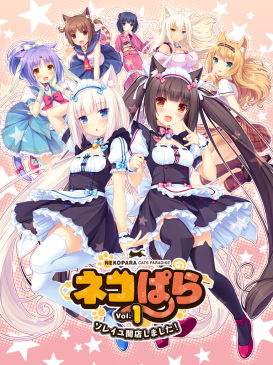
Nekopara, taglined Cats Paradise, is a series of adult visual novels developed by NEKO WORKs and published by Sekai Project. The first game in the series, Nekopara Vol. 1, was released in December 2014. Taking place in a world where humans live alongside catgirls. The series follows Kashou Minaduki and Shigure Minaduki, siblings who have a family of catgirls named Chocola, Vanilla, Coconut, Azuki, Maple, Cinnamon and Cacao. It is centered around work life at Kashou's pâtisserie and home life at Shigure's family house.
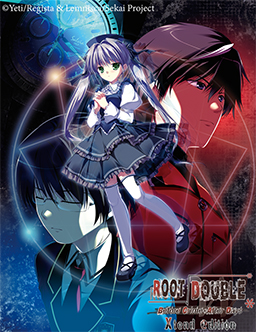
Root Double: Before Crime * After Days, stylized as ROOT√DOUBLE, is a visual novel video game developed in a collaboration between Regista and Yeti, and released by Yeti for Xbox 360 and Microsoft Windows in 2012. An updated version with a new ending, titled Root Double: Before Crime * After Days: Xtend Edition, was released for PlayStation 3 and PlayStation Vita in 2013 and 2014, and was released in English by Sekai Project for Microsoft Windows in 2016; the PlayStation Vita version was released in North America in 2018 and is planned to be released at a later date in Europe. It was also ported to Nintendo Switch in 2020.

Winged Cloud is an American English language visual novel developer. They are known for creating the Sakura visual novel series, mainly of the adult genre.
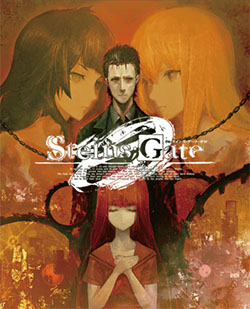
Steins;Gate 0 is a 2015 visual novel video game developed by 5pb. It is part of the Science Adventure series, and is set in the period of the 2009 game Steins;Gate. It was released by 5pb. in Japan for the PlayStation 3, PlayStation 4 and PlayStation Vita in December 2015, Microsoft Windows in August 2016, Xbox One in February 2017, and Nintendo Switch in March 2019.
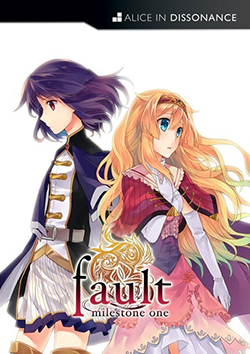
Fault Milestone One is a visual novel video game developed by Alice in Dissonance and published by Sekai Project. It was first released in Japan for Microsoft Windows, OS X, and Linux in 2013, with an English version localized and released by Sekai Project the following year. Versions for the Nintendo Switch and PlayStation 4 were later released in 2020.

The House in Fata Morgana is a visual novel video game developed by Novectacle. It was released for Microsoft Windows and iOS by Novectacle in 2012 and 2014 in Japan, and for Microsoft Windows by MangaGamer in 2016 internationally. Additionally, a Nintendo 3DS version was released by FuRyu in 2016, and a PlayStation Vita version was released by Dramatic Create in 2017, both exclusive to Japan. Another PlayStation Vita version, as well as a PlayStation 4 version, were released in North America by Limited Run Games in 2019, who also released a Nintendo Switch version of the game in 2021.

Flowers is a series of yuri-themed visual novel video games developed by Innocent Grey. The first entry, Flowers: Le Volume sur Printemps, was released in 2014; three more games were released in 2015, 2016, and 2017.

Sol Press was an American publishing company that focused on localizing Japanese visual novels, light novels, and manga. Located in Orange County, California, it was formed in 2017. In October 2021, it was prohibited from doing business in the state of California for non-payment of taxes.

Rabi-Ribi is a 2016 side-scrolling video game developed and published by Taiwanese independent developer CreSpirit. The game was initially crowdfunded, and despite only reaching half of its funding goal, it released on Steam for Windows in January 2016 to very positive reviews, and was ported to the PlayStation 4 and PS Vita in 2017. It was given a limited physical release for Playstation 4 and PS Vita through Limited Run Games in November 2018; a physical edition was previously available in Europe through publisher PQube. The game later received a port to Nintendo Switch in 2019. After its initial release, CreSpirit supported the game with substantial ongoing DLC and regular updates, which were originally available only through the Steam release. A 2024 announcement on the game's 8th anniversary of release confirmed paid DLC on Nintendo Switch and PS4 versions would be made available later that year, along with an all-inclusive "platinum edition".
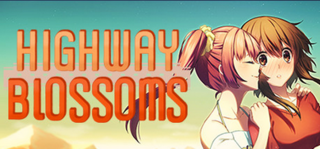
Highway Blossoms is a 2016 yuri romance visual novel developed by Studio Élan and published by Sekai Project and Élan.

















